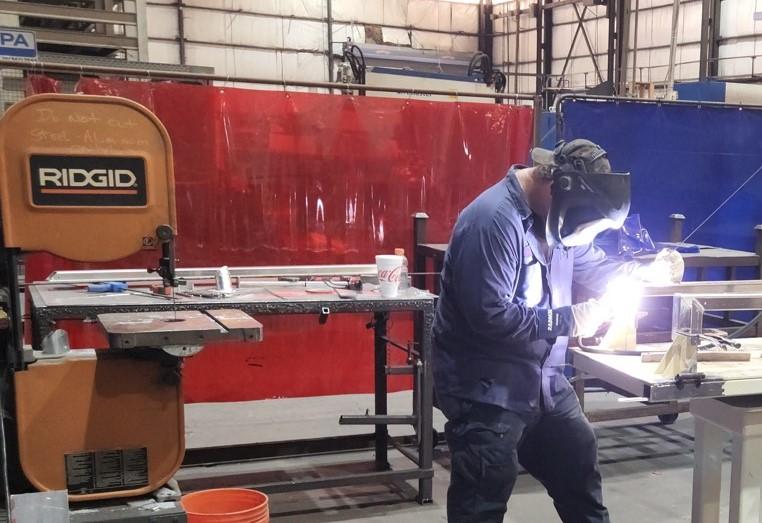International Conference on Welding Technology
Taking aluminum welding to the next level
A framed collage hangs on the wall near a desk occupied by Matt Marty, president of CMC of Georgia and grandson of the company founder. The fabricator has been in business for more than a century, and the collage shows the company’s handiwork over the years. One image shows a custom-fabricated cab for a 1940s-era crane. At that point, the fabricator had already been in business for more than 30 years.
Today, the 60-employee company fabricates a variety of work, including parts for commercial mowers (think golf courses and sod farms) as well as packaging equipment and specialty parts for the oil fields. That said, custom cabs still make up a significant portion of CMC’s revenue.
“We fit in the lower-volume end of the custom-cab business,” Marty said, adding that its bread-and-butter orders involve five to eight cabs a month. Next time you board a plane, check out the vehicles—for fuel, baggage handling, de-icing, and other special purposes—zipping around the tarmac. There’s a good chance some of the cabs on those vehicles came from CMC. Other cabs go to vehicles made for railroad maintenance yards, specialty fork trucks, mining, security, and construction.
CMC’s niche is in niche equipment. The specialty vehicles the company made in the 1940s and 1950s took a lot of planning, very much like the products in the fabricator’s current mix of work. But the way products are now fabricated—with blanking automation, streamlined forming, and some incredibly detailed process planning in welding—likely would have set the company founder’s head spinning.
Early Automobiles to 3D CAD
When Marty’s grandfather launched Chicago Manufacturing Co. (CMC) in 1910, the city had more horses than cars. During the shop’s initial decades, employees fabricated in-car water heaters (bleeding edge tech of the early 1900s). By the mid-1950s, the company was already an established player in the specialty vehicle cab market.
As a youth, Marty recalled watching sheet metal craftsmen laying out cut lines, shearing pieces to size, punching with a single-station punch, then forming on a mechanical brake. “They could do a lot of radius work too,” Marty recalled, adding that the shop produced a plethora of complicated contours and cones, all documented in an unusual way.
“All the engineering prints were drawn full size, done on large tables in the office” Marty said. These weren’t typical blueprints with isometric views. “All three views were on top of each other, drawn in different colors on the same piece of paper.”
Marty shook his head and chuckled. “They were so hard to read, and I never quite got them,” he said, adding that those who worked with them could of course comprehend them. For those who learned how to read them, the drawings gave a complete view of what could be a very complex job—perhaps a harbinger of some of the extensive fabrications the company’s employees work with today.
Those unique, real-size prints aren’t being used today, of course. Over the decades, CMC adopted design software like ProE and SolidWorks. Today, the company uses TruTops for its TRUMPF blanking systems and press brakes, simulating brake programs offline. The company’s OTC DAIHEN welding power sources can store 100 separate weld settings, tailoring voltages and amperages for various jobs. CMC has embraced the digitization of metal fabrication, from blanking to welding, but the heart of the operation still resides in welding and assembly, where complex fabrications require extraordinary attention to detail.
Welding Engineer Jason Smith, a certified welding inspector and educator (CWI/CWE), was hired in September 2021 to step up CMC’s aluminum welding game. He pointed to an aluminum blank dotted with etchings, made by the company’s 8-kW solid-state TRUMPF laser it installed in 2021. Those blanks were to become the fabricated “skins” of specialty cabs for railway maintenance vehicles. It was to be sent to a company in the Southeast, which in turn will send them to an end customer in Europe.
International Conference on Welding Technology
Visit Our Website:https://welding-conferences.sciencefather.com/
More Details:
Abstract Submission - https://x-i.me/wtcvish1
Award Nomination - https://x-i.me/wtavish2
Blogger:https://weldingtechnologyawards.blogspot.com


Comments
Post a Comment